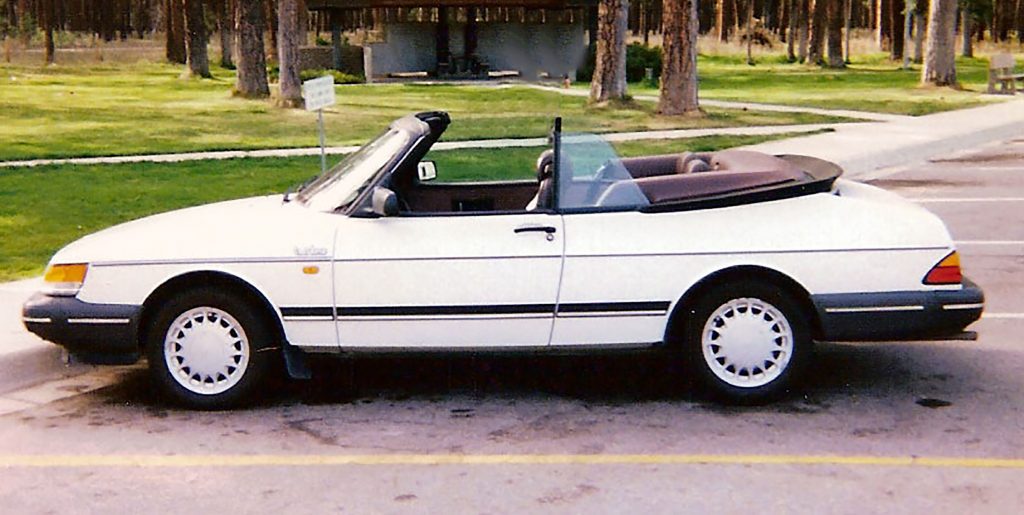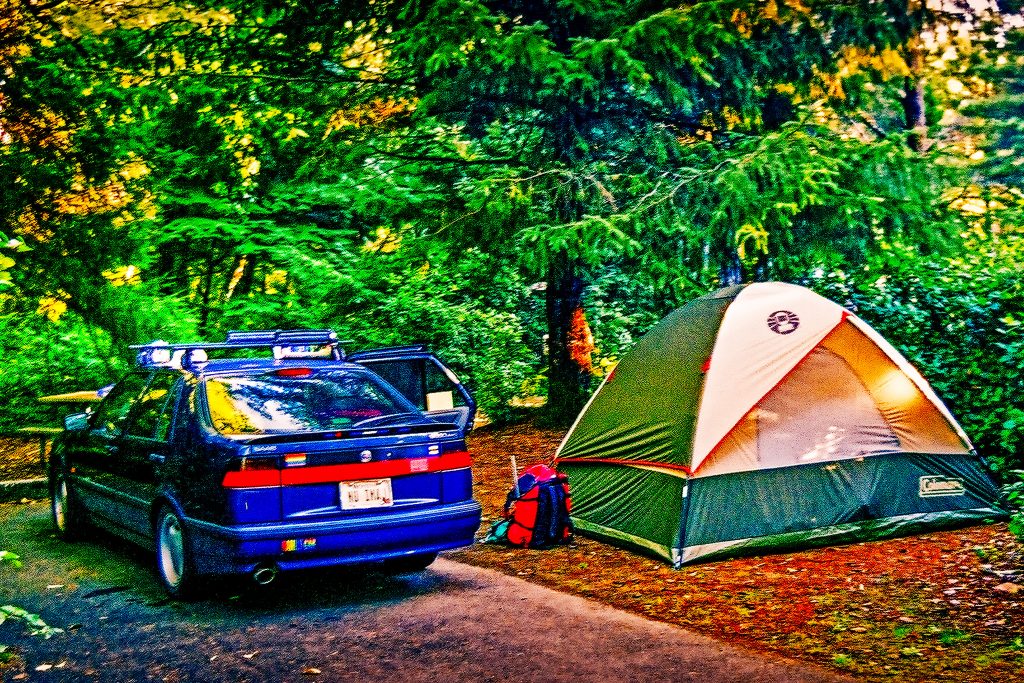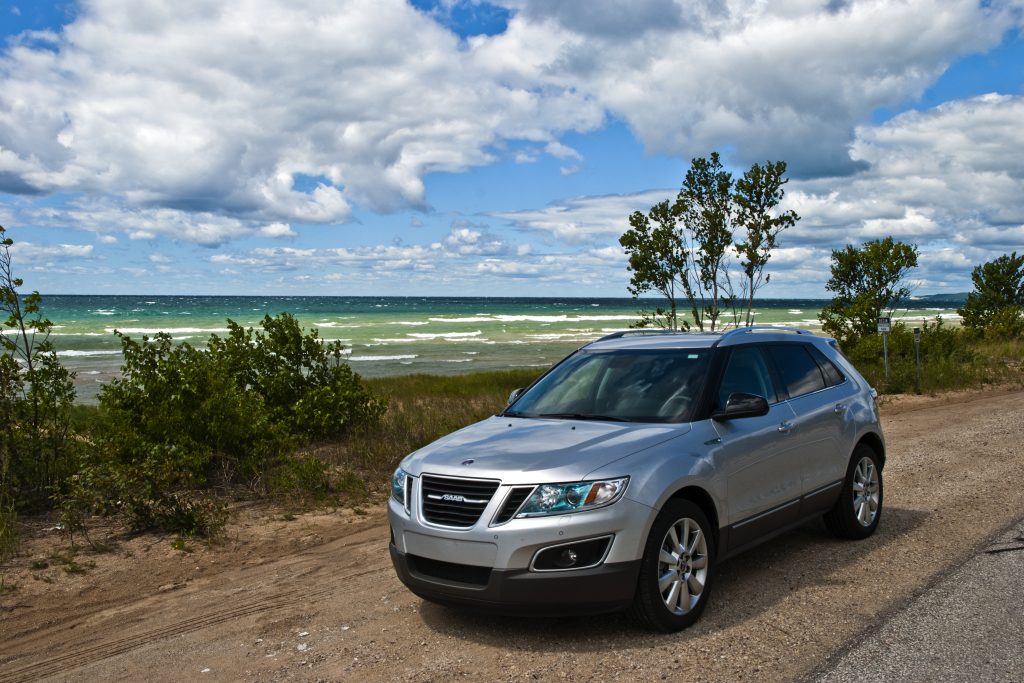Saab Automobiles

A Short, Sad History of SAAB
Saab Automobiles started as a division of Svenska Aeroplan AktieBolag. That company, also known as SAAB, got its start in 1937 in Trollhättan, Swedensa. The name usually translates to Swedish Airplane Company, Limited. I’m not sure where the “Limited” comes from as the Swedish term Akitebolag actually means “share company.” In any event, in 1937, two companies merged to form SAAB. The original Svenska Aero AB was born in 1921 when Versailles Treaty provisions made it illegal for Germany to produce aircraft. Two German industrialists found a work-around by setting up a Swedish company, and building their aircraft outside of Germany.
The 1937 merger brought together two leading aircraft manufacturers. The new company’s purpose was to supply the Swedish government with military aircraft as the world teetered toward World War II. The company still today produces fighter jets as well as air traffic control systems and radar equipment.
Saab Automobiles–Born From Jets
Prior to World War II, most cars sold in Sweden came from the U.S. With domestic production halted for the war, and then the strong demand immediately after the war, America kept her cars for her own people. Sweden had seen domestic automobile production since the late 1920s when Volvo got its start. But the feeling at SAAB was that they could diversify to help feed the domestic market. In 1949, the first SAAB 92 came down the assembly line.
The Saab 91 was a single engine trainer aircraft. The next number in the sequence was Saab 92, and that’s what the first car became. The 92 was pretty basic transportation. It ran with a 46.6 cubic inch two-stroke, two cylinder engine. Kurt Vonnegut, who claimed to own the first Saab dealership in the U.S. said that this was a sales problem. You had to add a quart of oil to the gas every time you filled the tank. Vonnegut didn’t have a lot of customers, which gave him time to write. Fortunately for us readers.
Kurt Vonnegut’s Cape Cod Saab Dealership
In his 2004 essay Have I Got a Car for You, Vonnegut wrote about the 92.
Listen: The Saab back then had only one model, a bug like a VW, a two-door sedan, but with the engine in front. It had suicide doors opening into the slipstream. Unlike all other cars, but like your lawnmower and your outboard, it had a two-stroke rather than a four-stroke engine. So every time you filled your tank with gas you had to pour in a can of oil as well. For whatever reason, straight women did not want to do this.
Saab Automobiles–One Quirky Car
From the beginning, Saab was a quirkly make. My guess is that it didn’t register on most folks radar—outside of Scandinavia. Over the years, Saab tried many different ventures in the attempt to stay afloat. 1968 saw the first major design change in twenty years. The Saab 99 broke new ground and introduced elements that would stay with Saab for the rest of its life.
In 1978, Saab joined with Fiat to produce a rebadged Lancia Delta as the Saab 600. This agreement led in 1985 to the Saab 9000—the first luxury car built by the marque. If you look closely at the 9000, you’ll see its family resemblance to three Italian cousins: The Alfa Romeo 164, the Fiat Croma and the Lancia Thema. 1978 also saw the introduction of the 900 model. Today, when most folk think of Saab, they see a 900 in their mind. The 900 even has its own Facebook group.
General Motors Steps In
GM bought 50% of Saab Automobiles in 1989. In 1994, they introduced a new 900 which shared the Opel Vectra platform. (Opel was a German General Motors product.) Under GM,the 9-5 replaced the 9000, and the 900 got a facelift and a new name badge—the 9-3. Three other models followed, all with ties to other General Motors makes. And in 1999, GM bought the other 50% making Saab a wholly owned subsidiary.
Want a Swedish Japanese Car? The Saab 9-2X was little more than a Subaru Impreza in Swedish dress. The 9-7x was a very slightly costumed Chevrolet Trailblazer. And in 2011, Saab’s last new model debuted. The 9-4x was basically the same car as the second generation Cadillac SRX. For a while, GM planned for a 9-6X based on the Subaru Tribeca. That project died when GM divested itself of Fuji Heavy Industries—the maker of Subaru.
And Out
The financial meltdown of 2007-2009, known as the Great Recession, hit General Motors hard. The company had already closed down its iconic Oldsmobile line in 2004. They shuttered Pontiac, Saturn and Hummer in 2010. Also in 2010, GM announced they had sold Saab Automobiles to the Dutch company Spyker N.V. Bankruptcy follwed in 2011, and since then a whole variety of attempts have been made to resurrect Saab automobiles. I won’t go into that melodrama here. Quite frankly, I find it very confusing even trying to get reliable information about the current status of the company.
My Four Saab Automobiles

I no longer remember the year, but we’d had a long and hard winter. One sunny March day, I drove down Missoula’s Broadway, passing a car lot. Right out in front, the dealer had placed two Saab convertibles, one silver, one white. Both had their tops down. Now Saab was never on my automotive radar. I bought into the lie that Saab Automobiles were the car for people who don’t like cars. And I liked cars.
Seeing those two convertibles, parked with tops down, I said to myself “What could it hurt?” I stopped and arranged for a test drive. That’s all it took. Back at the lot, I phoned a friend. “Come down here and talk be out of buying this car.” He did come down, but the car went home with me.
I don’t even remember how long I owned it. I do know that I made one long trip with it—out to Portland and back. And I’ll never forget the December night when a knock at the door awoke me at midnight. The cute kid bleeding on my porch asked “Do you know who owns the Explorer I just totalled?” “That would be me,” I replied, and headed out to see the damage. What I noticed, and the kid hadn’t, was that he totalled three vehicles that night. His daddy’s pickup was so firmly attached to my Explorer, that the towing company had trouble separating them. But he had hit the Explorer from the rear, pushing it into my Saab. When I pointed that out, the kid said “I’m gonna be making license plates for a long time.” He was drunk, under the legal drinking age and over the legal limit. Twice the legal limit—assuming he had been old enough in the first place.
My Second Saab

Daddy had good insurance, but even the best insurance doesn’t replace two vehicles with two vehicles. How do you replace an SUV and a sports car with one? The folks at Evergreen Engineering, Missoula’s Authorized Saab repair shop, bought my convertible. Saying good-bye to it, I noticed a dark blue Saab 9000 Aero behind their shop. Long story short, I bought it.
The 9000 was Saab’s attempt to build a luxury car. The Aero was the top of the line. My 1995 Aero had Recaro-style bucket seats. All leather interior. Wood (fake?) trim. And more buttons on the dash than I’d ever seen. It even had an in-dash radar detector. The owner of Evergreen told me the car had been clocked at 160 mph. I never drove it that fast. Nowhere near. But I did let that radar-detector drive me crazy. Automatic garage doors would set it off. Eventually, I just turned it off. I figured I wasn’t driving fast enough to warrant the aggravation.
Born from Jets–part II
The car was a joy to drive. Five speed manual transmission. I loved being behind the wheel. One time, I remember, Gary asked what a certain button did. I told him I didn’t know, so he decided to push it. I screamed to catch his attention. “Don’t push anything we don’t know when we’re going 70 down the highway!” For all I know it was the James Bond passenger eject button.
It was a true four-season car. I put a Thule rack on it and hauled my cross-country skis up to Lolo Pass. In the summer I carried my canoe or my sailboard to the water. One trip to visit Momma, I picked up a hitch-hiker in Spokane. He was headed west and didn’t care if he went to Seattle or Portland. By the time we got to the Dalles, he decided he’d travel on with me. We bought a tent at Fred Meyers and camped in the Columbia Gorge. By the time we hit the Oregon Coast, I trusted him to drive. He knew how to make that car sing. I did have to caution him that in the United States, it’s poor form to run over pedestrians in a cross-walk. He was a Hungarian athlete, training for the 2004 Olympics. I told him that if he qualified, I’d travel to Athens and cheer on Hungary!
Saying good-bye to the Aero
In late 2004, my Aero started ailing. It was only nine years old. Saabs should live a lot longer. Evergreen couldn’t cure my problem. On a trip to visit Momma in March 2005, the car died in the Columbia Gorge. I had it towed to the Portland Saab dealer. After two days, they told me that car was fine, and I headed on to California. I made it to Salem, and had the car towed back to Portland. While I was waiting on repairs, I looked at the dealer’s used cars. They had a fleet of lease return Volvo wagons, and I ended up trading my Aero for a 2001 Volvo V70 XC AWD. (And yes, all those letters actually mean something.) At this point, there was no time to continue on to California, so I sent the rest of the week playing in Portland, then drove the Volvo home. I loved that Aero, and wish I still had it—without the mechanical problems, of course.
My Second 900 Convertible

I missed my convertible, and however nice the Volvo was, it wasn’t a convertible. Driving down Brooks, I passed another car lot. They had a gorgeous 1996 Saab 900 convertible on display. Lord help me, I bought it. To this day I think it’s the prettiest car I’ve ever owned. And I still own it. Ok. It’s the base model. But it has a 5-speed manual transmission and it moves. I love tackling roads like Oregon’s US 101—the Coast Highway—with the top down.
Again, I don’t remember just when I bought it, but by this time I knew to insert the key between the front seats. I knew to put the car in reverse if I wanted to raise or lower the top. And I knew that I’d have some mechanical issues in time. But that’s true with any car. The first time I took the car to Evergreen, Doug, the owner, looked up from his computer and said “Saab doesn’t know this car is in the U.S.” Hmm, I guess that’s why my key fob says “International and Diplomat Sales.” The car also had some fancy duct work under the dashboard. Doug had never seen anything like that on a U.S. spec Saab.
The original owner bought the car in Germany. Saab thought it was still in Germany. Guess I was the first U.S. owner to take the car to a Saab Service Center. I did take the car to Dana Motors, the only Saab Dealer in Montana. One of the service techs asked me “Where’d you get this old thing.” I was not amused. I didn’t then, and don’t now, think of it as an old car. It’s only 24—not even old enough to get classic plates.
Aren’t all Swedish-American Cars Built in Mexico?

By 2012, my Volvo was beginning to seem a bit dated. Kevin asked what I would buy if money were no object. I think I surprised him by saying “a 1964 Studebaker GT Hawk.” My second choice was the Saab 9-4x. By 2012, GM had cut Saab loose and the company no longer produced cars. Kevin thought I was nuts to want something that I couldn’t service, but I bought it anyway. When has any of my Saab purchases been about practicality?
There were no 9-4x models available locally, but the owner of Dana Motors in Billings told me that GM had just discovered a shipment of cars. Going on-line, I found one in Plymouth, Wisconsin. For the first (and so far only) time in my life, I bought a car over the internet. Without seeing it. With no test drive. Without any sense whatsoever.
My one 9-4x Road Trip
The beginning of August, 2012, I boarded Amtrak in Whitefish, Montana bound for Milwaukee. I picked up the car in Plymouth, and headed north and east. Driving across the Upper Peninsula, I crossed the Mackinac Bridge. I continued on to West Virginia, where I spent the rest of the month. I learned quickly that the driver’s seat did not fit me. The side bolsters cut into my thighs, and made my legs ache. Oh well, what’s done is done. I bought a pillow to sit on when driving.
At the end of the month, I called Kevin and suggested he meet me in Columbus, Ohio and drive home with me. When I picked him up at the airport, he asked “How would you like to visit Starkville, Mississippi? You know me. I’m always up for a road trip. So, instead of heading west, we drove south. Driving through Tennessee we found ourselves in the aftermath of Hurricane Isaac. I’ve never seen such heavy rain. I told Kevin that he had a choice. He could drive, or we could find a way to sit out the storm. I couldn’t see past the windshield.
Killing the 9-4x
Long story short, we eventually made it home, driving from Arkansas to Missoula in one 25 hour non-stop sprint. That was the first and last road trip I made in the 9-4x. In 2015, I took the car to Spokane for routine service. On the way home, I fell asleep near Cataldo, Idaho, and drove into the median at 70 mph. The car took to the air, and came down on its nose. I was fortunate. I walked away from the accident. The car was not so lucky. Kevin’s concern had come to pass. There were no parts available to fix my car. It was totalled. At this point, that’s my last Saab. I’m not saying I won’t buy another convertible, given the chance, but I’m 71 years old. I don’t really need to think about more cars.
Made in Trollhättan by Trolls
For years, Saab used the slogan “Made in Trollhätten by Trolls.” Great slogan. Trollhättan is, after all, the corporate home, even today, for Saab Automobiles. The Saab Museum is there. But, as you’ve just read, I have owned four Saab automobiles. Not one was built in Sweden, let alone in Trollhättan, by Trolls. Until 2003, all Saab convertibles were built in Finland. My 1995 Aero was also built in Finland. My 2011 9-4x was built, where else, in Mexico. As I noted above, aren’t all Swedish-American cars built in Mexico?
I hope you’ve enjoyed this trip down memory lane. Saturday is the day for car shows, so I’m devoting my Saturday posts to matters automotive. Last Saturday, we looked at another orphan make that’s dear to my heart: Mercury. Not sure what we’ll look at next Saturday, but it will be car related.
TTFN
![]()
